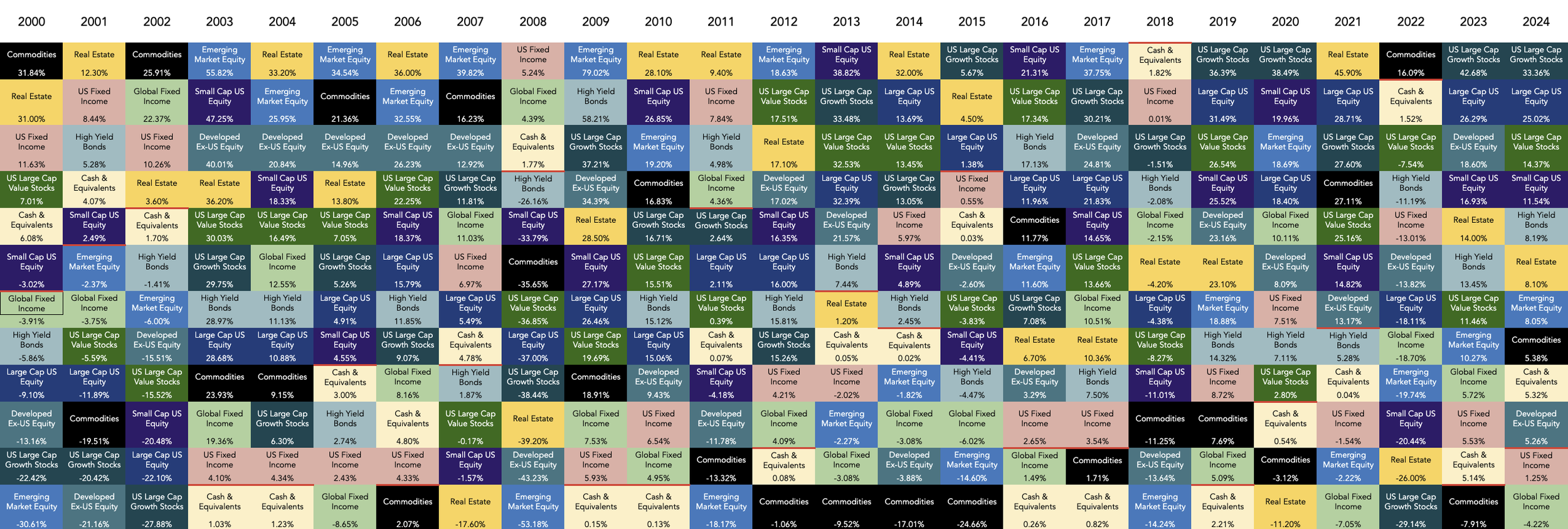The Beauty of Making the Wrong Choice
We make thousands of choices every day…Which shoes to wear, where to stop for coffee, and, yes, where to invest.
But as we know, sometimes it rains and we should’ve worn rain boots instead of flip flops, sometimes we stop at the coffee shop with a long line instead of the one down the street with no wait, and sometimes we buy investments in anticipation of one thing happening and it doesn’t materialize.
For a minute, let’s talk about flip flops. Specifically, the process you’d go through to choose to wear flip flops.
When getting ready for the day you might think:
What do I need to do today that might affect my shoe choice?
What could cause my plans to unexpectedly change?
What is the weather forecast?
Should I prioritize style or comfort?
What will others around me be wearing? Should I fit in or stand out?
Sometimes it’s obvious that we should wear flip flops; like if I were meeting a client who is a big Jimmy Buffett fan at the beach and the forecast is clear. But other times we don’t have that much information in advance and a safer bet — like some nice sneakers— makes sense.
The good thing about this choice is it’s not life and death, it’s just shoes. But in the absence of crystal clear foresight, there are safer bets like sneakers and riskier ones like flip flops or high heels or snow boots.
Of course, this writing is not about shoe choice. It’s about the fact that we all make wrong —or at least suboptimal— choices regularly. The important thing is that we understand when to make the safe choice and when to be more targeted and specific. When we know that we’re going to be making suboptimal choices we can shift our energy to helping ensure our bad decisions aren’t the kind which can disproportionately ruin our day, week, month, year, retirement, etc….
So, we covered flip flops, now let’s talk about investing.
Diversification means you’re guaranteed to make the wrong choice
Below is a snippet from our Asset Class Tapestry (something we make each year, in house); it shows the best performing asset class at the top, worst at the bottom.
I like this chart because it’s a succinct reminder of what’s happened in the past; a reminder we often need because us humans tend to focus on what just happened when considering what we think will happen in the future.
Here’s the chart:
On the far right column for 2024 you can see last year was great for Large Cap Growth Stocks. It was bad for Global Fixed Income.
Now rewind to 2002 at the left of the chart… A very different story. Global Fixed Income was near the top while Large Cap Growth Stocks were the worst performers.
Tip: I keep a version of this chart near my desk at all times, it provides helpful reminders of the past.
Starting next year, we’re going to be printing and sending a high quality version of this chart to clients and prospective clients of Harding Wealth. If you’re interested, shoot me an email.
Globally diversified investors over the last 25 years would have participated in the rallies and declines in the asset classes above, and their diversification would be both the reason they were often right (by owning the best performers), but also the reason they were regularly wrong (by owning the worst performers).
We have very little certainty about the future, so we have to consider the more reliable bet which is better suited for a variety of possible scenarios.
Diversified investors do a good job at of maintaining the humility required to realize how generally worthless market forecasts are.
The reliable bet is rarely the best thing, but it’s also rarely the worst.…And that, my friends, is The Beauty of Making the Wrong Choice — it means you’re also likely to be right at the same time because you’ve realized being wrong was inevitable. Remember this when building your portfolio.
While we’re at it, here are three more things I think are worth keeping in mind when you build your portfolio:
1) Companies are profit seeking over everything else. If they are investing their free cash flow back into their products or services instead of buying treasury bonds, then you can assume they are making a calculated decision with their own financial future in mind. This is why we believe in the equity premium (i.e. the idea that stocks outperform bonds over time). Stocks don’t always outperform (nothing does) and capital reinvestment often doesn’t work out (like the Amazon Fire Phone) but we like to lean into the self-serving prerogative of owners.
2) Commodity trades are hard. Here’s how to make money investing in commodities: buy a commodity from someone who wants the price to fall after they sell it to you. Hope the price goes up. Sell the commodity to someone else before you think the price will fall.
That’s a hard game to play. Stocks and real estate, on the other hand, can see price movements and income (rent and dividends). When given the chance to have one or two paths towards an investment working out, we tend to prefer two.
3) The mediocrity provided by the market is better than mediocre. When you think about the potential benefits of spotting the next great American company in its early days, I want you to also think of the cost of investing in a bunch of duds along the way. Spotting those huge winners is insanely difficult for even the brightest and most dedicated minds (or supercomputers). Don’t miss out on what the broader, more diversified market, may provide by instead chasing lottery wins.
That’s all for now.
Onward,
Adam Harding
Advisor @ Harding Wealth Inc. | Optimist
www.hardingwealth.com/team
*Diversification does not guarantee positive returns or eliminate risk of loss.


